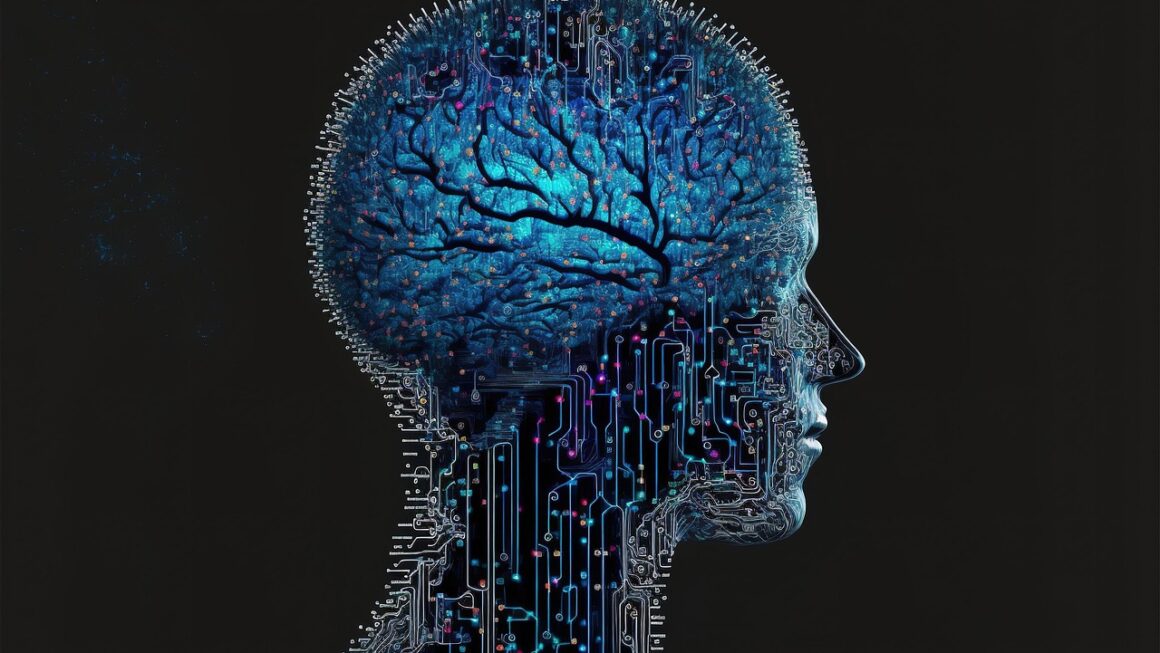Imagine stepping into a digital world where you can collaborate with colleagues across the globe, attend virtual concerts, explore ancient civilizations, or even design and build your own virtual property – all without leaving your home. This is the promise of the metaverse, a concept that’s rapidly evolving from science fiction into a potential reality. But what exactly is the metaverse, and how will it impact our lives? Let’s delve into this transformative technology and explore its potential and implications.
Understanding the Metaverse: A Deep Dive
Defining the Metaverse: Beyond the Hype
The metaverse isn’t a single technology or platform, but rather a constellation of technologies converging to create persistent, shared, 3D virtual worlds. Think of it as an evolution of the internet, where you can interact in a more immersive and embodied way. It’s a digital realm where users can:
- Interact socially: Connect with others in virtual spaces, attending events, collaborating on projects, or simply socializing.
- Engage in commerce: Buy, sell, and trade digital assets, participate in virtual economies, and experience new forms of entertainment.
- Create and customize: Design your own avatars, build virtual environments, and contribute to the overall metaverse experience.
The key elements of a true metaverse experience typically include:
- Immersion: A sense of being present in the virtual world, often enhanced by virtual reality (VR) or augmented reality (AR) technology.
- Persistence: The metaverse continues to exist and evolve even when individual users are not actively participating.
- Interoperability: The ability to seamlessly move assets and identities between different metaverse platforms and experiences.
- Social Interaction: Opportunities to connect and engage with other users in meaningful ways.
Current Metaverse Platforms and Examples
While a fully realized, universally interoperable metaverse is still a work in progress, several platforms offer glimpses of its potential:
- Meta Horizon Worlds: A social VR platform allowing users to create and explore user-generated worlds. For example, you could attend a comedy show, play a game, or build your own interactive space.
- Decentraland: A decentralized virtual world owned and governed by its users, where you can buy, develop, and trade virtual land (LAND) using cryptocurrency. Imagine creating a virtual art gallery and selling your digital artwork.
- Sandbox: A community-driven platform where creators can monetize voxel assets and gaming experiences on the blockchain. Users can design and share their own games and earn SAND, the platform’s native token.
- Roblox: A popular online game platform and game creation system that allows users to program games and play games created by other users. Many see Roblox’s evolving virtual experiences as a precursor to the metaverse.
- Fortnite: While primarily a battle royale game, Fortnite has expanded to include virtual concerts, movie screenings, and other social experiences, blurring the lines between gaming and the metaverse.
The Technologies Powering the Metaverse
VR/AR: The Gateway to Immersion
Virtual reality (VR) and augmented reality (AR) technologies are crucial for creating immersive metaverse experiences.
- VR headsets like the Meta Quest Pro or HTC Vive Cosmos provide fully immersive experiences, transporting users to entirely virtual environments.
- AR glasses like the Microsoft HoloLens overlay digital information onto the real world, blending the physical and virtual realms.
These technologies are essential for providing users with a sense of presence and agency within the metaverse. The continued development of lighter, more affordable, and higher-resolution VR/AR devices will be critical for broader metaverse adoption.
Blockchain and NFTs: Enabling Digital Ownership
Blockchain technology and non-fungible tokens (NFTs) play a key role in enabling digital ownership and creating verifiable scarcity within the metaverse.
- NFTs allow users to own unique digital assets, such as virtual land, avatars, in-game items, and digital art. Owning an NFT gives you verifiable proof of ownership and control over your digital possessions.
- Blockchain-based virtual economies can facilitate secure and transparent transactions within the metaverse, allowing users to buy, sell, and trade digital assets with confidence.
For example, owning an NFT avatar in Decentraland allows you to customize it and use it across various experiences within that platform. The ability to truly own digital assets within the metaverse is a fundamental aspect of its appeal.
3D Modeling and Virtual World Creation Tools
Tools like Unity and Unreal Engine are essential for creating the immersive 3D environments that define the metaverse.
- These game engines provide developers with the tools to design, build, and deploy interactive virtual worlds, complete with realistic graphics, physics, and user interfaces.
- User-friendly creation tools are also emerging, empowering non-developers to contribute to the metaverse by building their own virtual spaces and experiences. Platforms like Roblox provide intuitive tools for users to create and share their own games and worlds.
Potential Applications and Benefits of the Metaverse
Revolutionizing Social Interaction and Collaboration
The metaverse has the potential to transform how we interact with each other, fostering new forms of social connection and collaboration.
- Virtual meetings and conferences: Imagine attending a conference where you can network with attendees in a realistic virtual environment, participate in interactive workshops, and view presentations on a virtual stage.
- Immersive learning experiences: The metaverse can provide engaging and interactive educational experiences, allowing students to explore historical sites, dissect virtual organisms, or collaborate on projects in a shared virtual lab.
- Enhanced remote collaboration: Teams can work together in shared virtual workspaces, using 3D models and simulations to visualize and interact with complex data.
Transforming Entertainment and Commerce
The metaverse offers new avenues for entertainment and commerce, creating opportunities for creators and businesses alike.
- Virtual concerts and events: Artists can perform for audiences in immersive virtual environments, offering unique and engaging experiences that go beyond traditional concerts. For example, Ariana Grande performed a virtual concert in Fortnite that attracted millions of viewers.
- Virtual shopping experiences: Consumers can browse and purchase products in interactive virtual stores, trying on clothes with virtual avatars or exploring furniture in their own virtual home.
- New forms of digital art and collectibles: The metaverse is creating new markets for digital art and collectibles, allowing artists to monetize their creations and collectors to showcase their digital possessions.
Empowering Education and Training
The metaverse offers immersive and engaging educational and training experiences that can improve learning outcomes.
- Simulated training scenarios: Professionals can practice complex tasks and procedures in realistic virtual environments, without the risk of real-world consequences. For example, surgeons can practice delicate operations in a virtual operating room.
- Interactive learning modules: Students can explore historical events, scientific concepts, and cultural artifacts in immersive and engaging virtual environments.
- Personalized learning experiences: The metaverse can adapt to individual learning styles and paces, providing customized feedback and support to help students succeed.
Challenges and Considerations
Privacy and Security Concerns
- Data privacy is a paramount concern. How will user data be collected, stored, and used within the metaverse? What safeguards will be in place to protect against data breaches and misuse?
- Identity verification and authentication are crucial. How can we ensure that users are who they claim to be and prevent malicious actors from impersonating others?
- Content moderation is a significant challenge. How can we effectively moderate user-generated content and prevent the spread of harmful or offensive material?
Accessibility and Digital Divide
- The high cost of VR/AR hardware and high-speed internet access could create a digital divide, excluding certain populations from participating in the metaverse.
- Accessibility considerations are important. The metaverse should be designed to be inclusive of users with disabilities, providing alternative input methods and customizable interfaces.
Regulatory and Ethical Issues
- The legal and regulatory frameworks for the metaverse are still evolving. How will intellectual property rights be protected in virtual worlds? What laws will govern transactions and interactions within the metaverse?
- Ethical considerations, such as the potential for addiction and the impact on mental health, need to be addressed. How can we promote responsible metaverse usage and prevent negative social consequences?
Conclusion
The metaverse holds immense potential to transform how we live, work, and interact with each other. From revolutionizing social connection and commerce to empowering education and training, the possibilities are vast and exciting. However, it is crucial to address the challenges and considerations surrounding privacy, security, accessibility, and regulation to ensure that the metaverse is developed and deployed in a responsible and ethical manner. As technology continues to evolve, understanding and navigating the metaverse will be increasingly important for individuals, businesses, and policymakers alike. The future of the internet may very well be a future within the metaverse.




